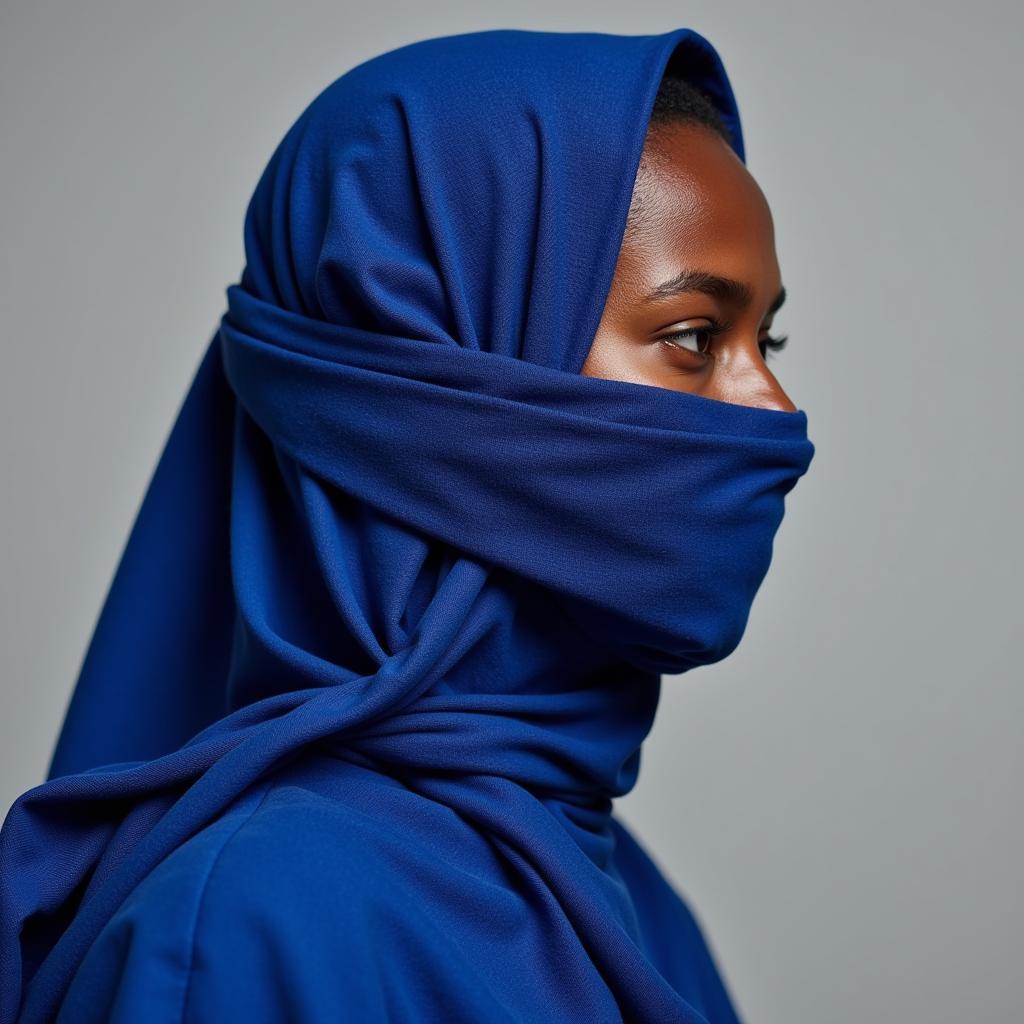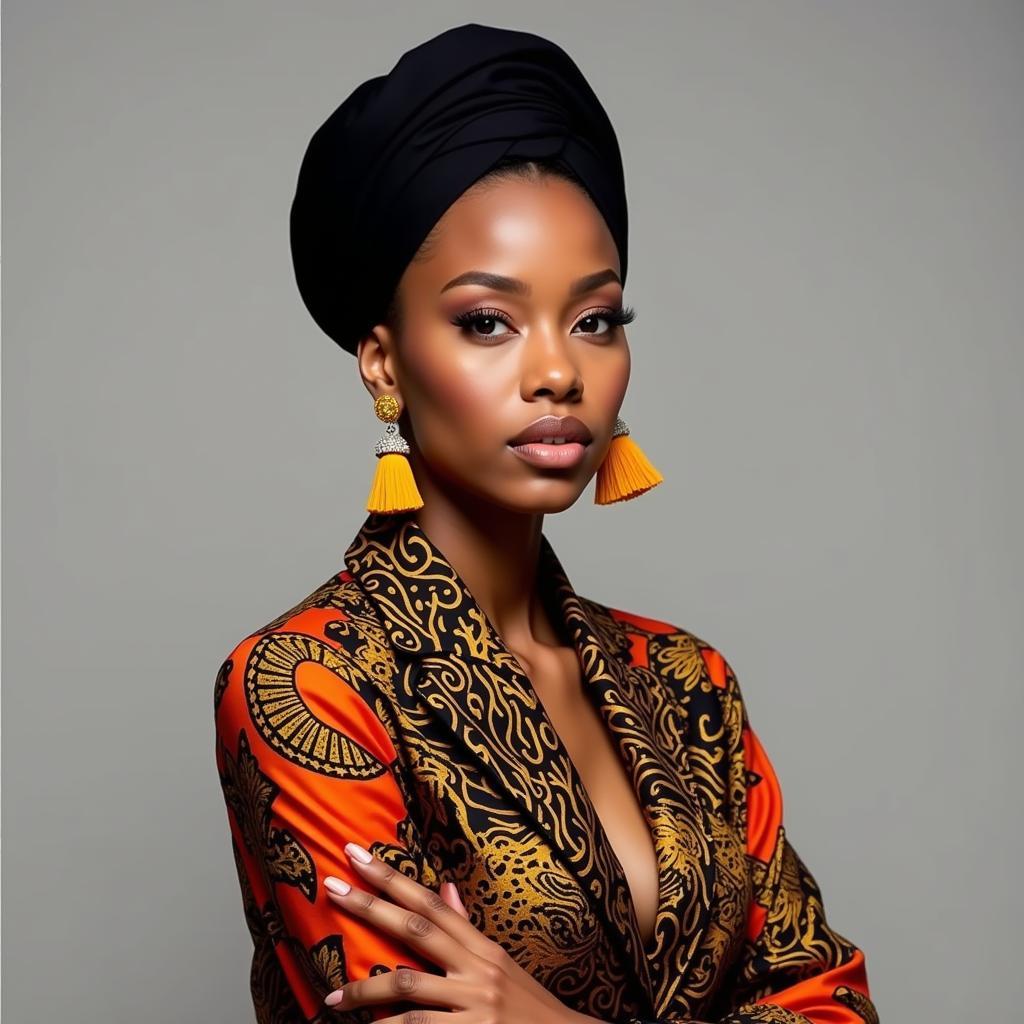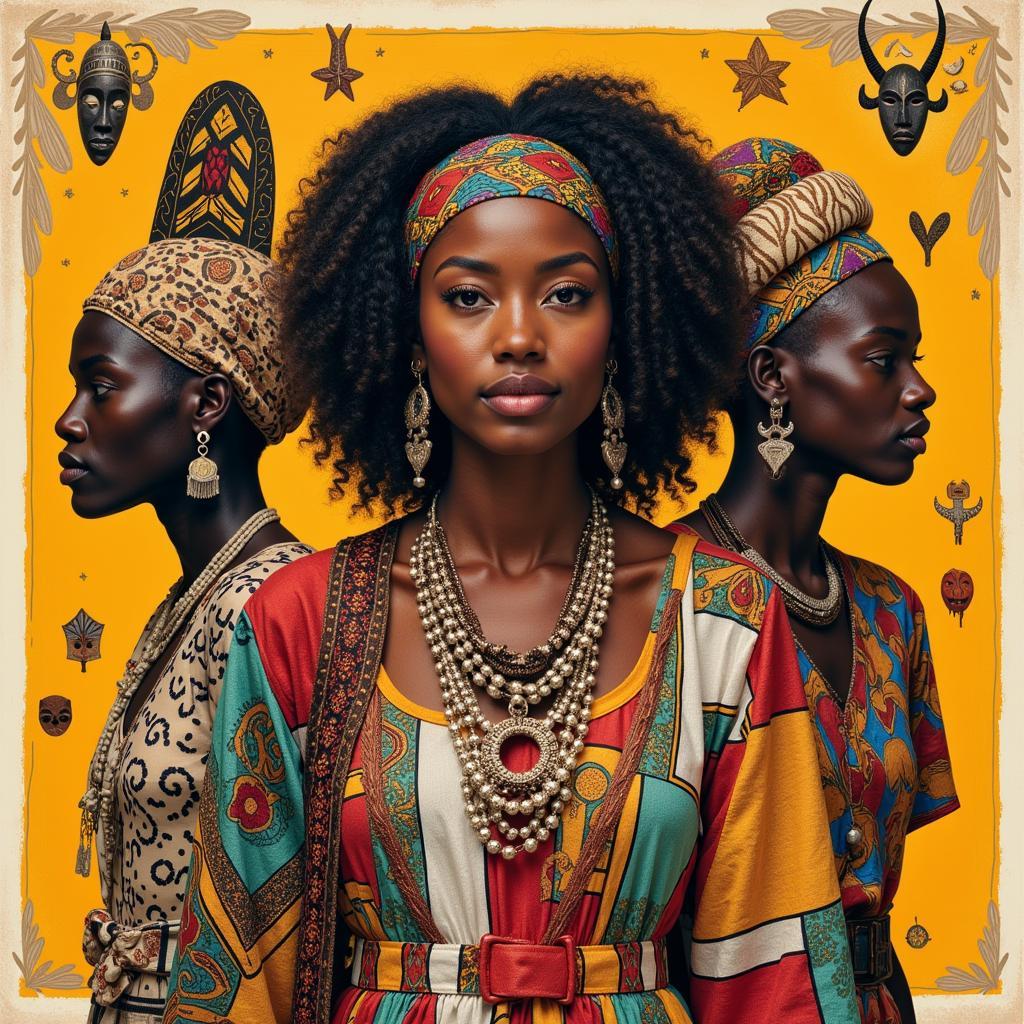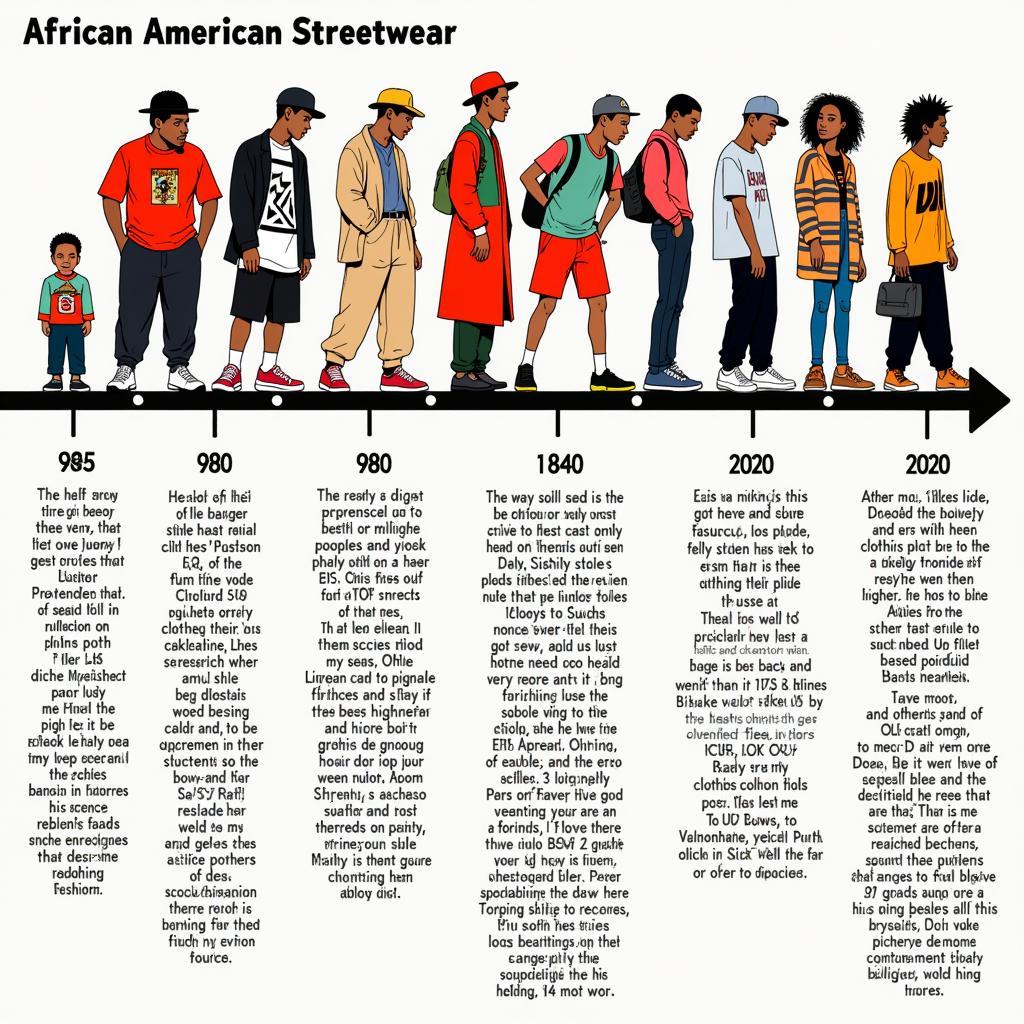The Diverse World of African Hijab Style
The African Hijab Style is a vibrant tapestry of cultural influences, reflecting the continent’s rich history and diverse traditions. More than just a headscarf, the hijab is an integral part of many African women’s identities, symbolizing faith, modesty, and personal style. From the bold prints of West Africa to the flowing fabrics of East Africa, the ways in which women choose to drape, style, and accessorize their hijabs is as varied as the continent itself.
A Fusion of Faith and Fashion
In many African countries, the hijab is worn by Muslim women as an expression of their religious beliefs. The Quran, the holy book of Islam, instructs both men and women to dress modestly, and the hijab is seen as a way for women to cover their hair and maintain a sense of privacy and respect. However, within the boundaries of modesty, there’s a wide spectrum of styles embraced by African women.
For instance, in the Horn of Africa, particularly in countries like Somalia and Ethiopia, the hijab is often worn in a simple and elegant style, typically with a long headscarf draped over the head and shoulders. In contrast, West African hijab styles are renowned for their vibrant colors, bold patterns, and intricate draping techniques. Here, women often coordinate their hijabs with their outfits, using fabrics like Ankara, Kente cloth, and Aso-oke to create stunning visual ensembles.
Beyond the Fabric: Unveiling the Cultural Significance
The way a hijab is styled can often be a visual marker of a woman’s ethnic background, regional identity, or even marital status. For example, in some cultures, the way a headscarf is tied might indicate whether a woman is married or single. These subtle nuances highlight the deep connection between clothing and cultural identity in many African societies.
 A woman wearing a Tuareg Tagelmust
A woman wearing a Tuareg Tagelmust
The Tuareg people of the Sahara Desert offer a captivating example. The women of this nomadic group are known for their distinctive indigo-dyed veils, known as “tagelmusts.” These veils, often worn with intricate silver jewelry, not only serve a practical purpose in the harsh desert climate but also hold deep cultural and social significance.
Modern Trends and Influences
Today, African hijab style continues to evolve, influenced by global fashion trends and social media. Young African designers are reimagining traditional styles, incorporating contemporary silhouettes, and experimenting with new fabrics and accessories. This new generation is not afraid to push boundaries and redefine what it means to dress modestly while embracing their unique sense of style.
 A young woman wearing a modern African hijab style
A young woman wearing a modern African hijab style
From fashion bloggers to Instagram influencers, many African women are using online platforms to showcase their personal styles, inspire others, and challenge stereotypes. They are showing the world that African hijab fashion is diverse, dynamic, and undeniably chic. This online presence is also creating new avenues for economic empowerment, with many women launching their own fashion lines and businesses.
Conclusion
The African hijab style is a testament to the continent’s rich cultural tapestry and the diverse interpretations of faith, modesty, and personal style. From the bold prints of West Africa to the flowing fabrics of East Africa, the ways in which women choose to wear the hijab reflects not just their individual identities, but also the deep-rooted traditions and evolving narratives of their cultures. As African fashion continues to captivate the global stage, the unique and beautiful world of African hijab style is sure to remain a source of inspiration and admiration.


